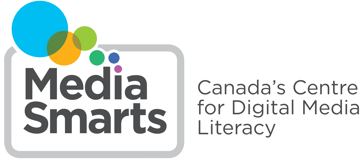
That's Not Me: Diversity and Media
The That’s Not Me tutorial focuses on the role that mainstream media play in shaping our perceptions about diversity. The tutorial explores what we see – and what we don’t see – on TV and in newspapers, video games, movies, the internet and other media. The tutorial looks at common trends in media portrayals of diversity and examines the reasons behind these trends; explores some of the factors behind media bias when covering diversity issues; and talks about the importance of media education to talking about diversity issues and empowering young people to take action.
Unpacking Privilege
Students are introduced to the idea of “privilege” in relation to diversity and how it applies to media. They then look at a checklist of media related privileges to help them understand the concept.

Who's Telling My Story?
In this lesson students learn about the history of blackface and other examples of majority-group actors playing minority-group characters such as White actors playing Asian and Aboriginal characters and non-disabled actors playing disabled characters.

Framing the News
In this lesson, students consider the idea that a news source can be “accurate but misleading” through the concept of framing. Students learn about the different ways that news stories may be framed, identify examples of framing in a news story, then find and evaluate examples of framing in news stories on a particular issue.

That’s Not Me: Addressing diversity in media
Teachers who include media literacy in their classrooms often face issues that don’t arise in other subjects. Nothing illustrates this better than the issue of diversity in media. It’s not unreasonable for teachers to see the topic as a can of worms and be concerned about offending students and their parents – not to mention worrying about what the students themselves might say. At the same time, it’s a topic that is simply too important to be ignored: what we see in media hugely influences how we see others, ourselves and the world. As a result, an ability to analyze media depictions of diversity is not only a key element of being media literate, it’s essential to understanding many of the social issues and concerns that we face as citizens. That’s why Media Awareness Network has developed That’s Not Me – a new online tutorial for professional development to help educators and community leaders approach this issue through key concepts of media literacy.
